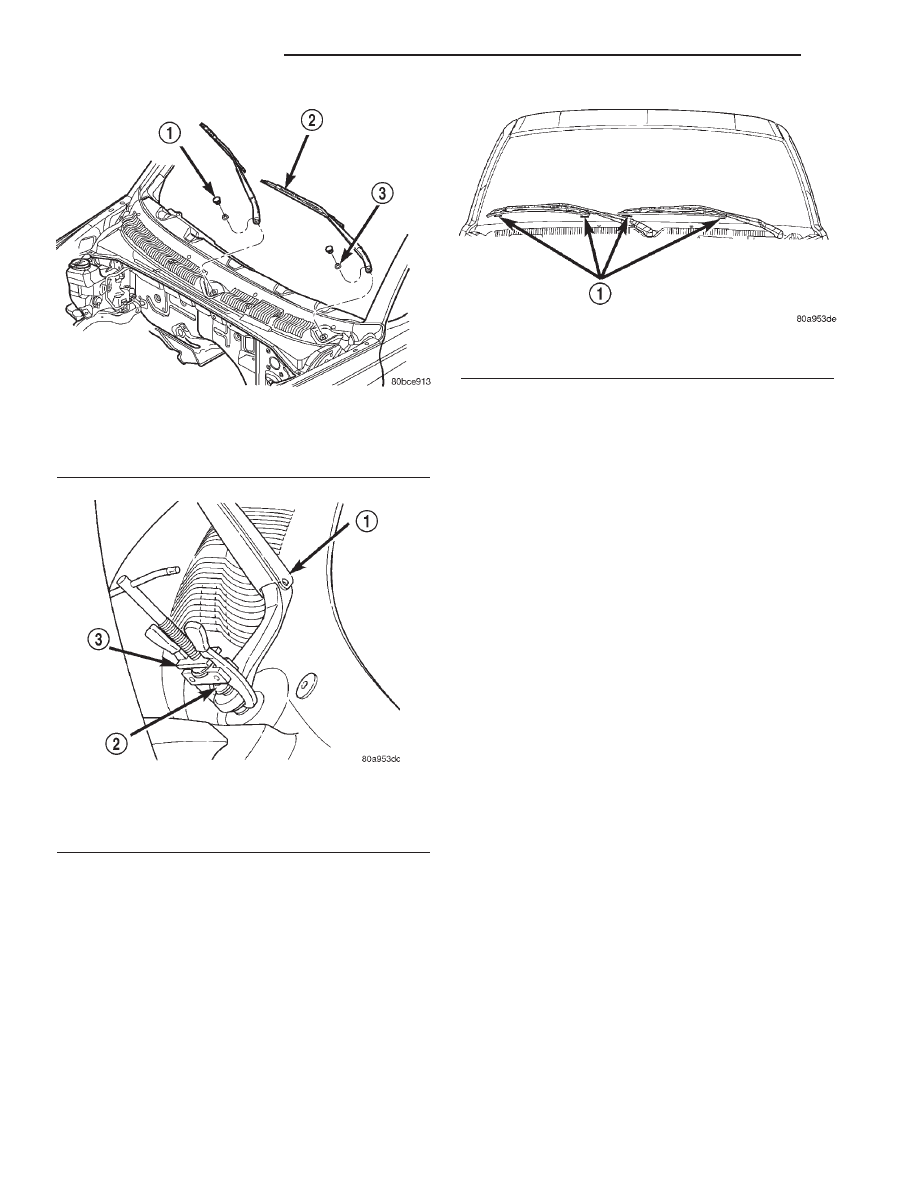Dodge Dakota (R1). Manual - part 362

be properly installed. Position the wiper arm pivot
ends onto the wiper pivots so that the lower edge of
the blade is aligned with the wiper alignment lines
concealed in the upper margin of the lower wind-
shield blackout area, ± 15 mm (± 0.59 in.) (Fig. 9).
(2) Once the wiper blade is aligned, lift the wiper
arm away from the windshield slightly to relieve the
spring tension on the pivot end and push the pivot
hole on the end of the wiper arm down over the
wiper pivot shaft.
(3) Install and tighten the nut that secures the
wiper arm to the wiper pivot shaft. Tighten the nut
to 23.7 N·m (210 in. lbs.).
(4) Wet the windshield glass, then operate the wip-
ers. Turn the wiper switch to the Off position, then
check for the correct wiper arm position and readjust
as required.
(5) Reinstall the plastic nut cap onto the wiper
arm pivot nut.
WIPER BLADE
DESCRIPTION
Each wiper blade is secured by an integral latching
pivot block to the hook formation on the tip of the
wiper arms, and rests on the glass near the base of
the windshield when the wipers are not in operation.
The wiper blade consists of the following components:
• Superstructure - The superstructure includes
several stamped steel bridges and links with claw
formations that grip the wiper blade element. The
driver side and passenger side wiper blades are not
interchangeable. The superstructure of the driver
side blade features an additional bridge, which pro-
vides an additional set of claws to retain the wiper
squeegees. Their are eight sets of claws on the driver
side, and six sets of claws used on the passenger
side. Also included in this unit is the latching,
molded plastic pivot block that secures the super-
structure to the wiper arm. All of the metal compo-
nents of the wiper blade have a satin black finish
applied.
• Element - The wiper element or squeegee is the
resilient rubber member of the wiper blade that con-
tacts the glass.
• Flexor - The flexor is a rigid metal component
running along the length of each side of the wiper
element where it is gripped by the claws of the
superstructure.
All Dakota truck models have two 50 centimeter
(19.69 inch) wiper blades with non-replaceable rub-
ber elements (squeegees). These wiper blades also
Fig. 7 Wiper Arm Remove/Install
1 - NUT CAP
2 - WIPER ARM AND BLADE
3 - NUT
Fig. 8 Wiper Arm Puller - Typical
1 - WIPER ARM
2 - WIPER PIVOT
3 - BATTERY TERMINAL PULLER
Fig. 9 Wiper Arm Installation
1 - WIPER ALIGNMENT LINES ± 15 mm (± 0.59 in.)
8R - 14
WIPERS/WASHERS
AN
WIPER ARM (Continued)